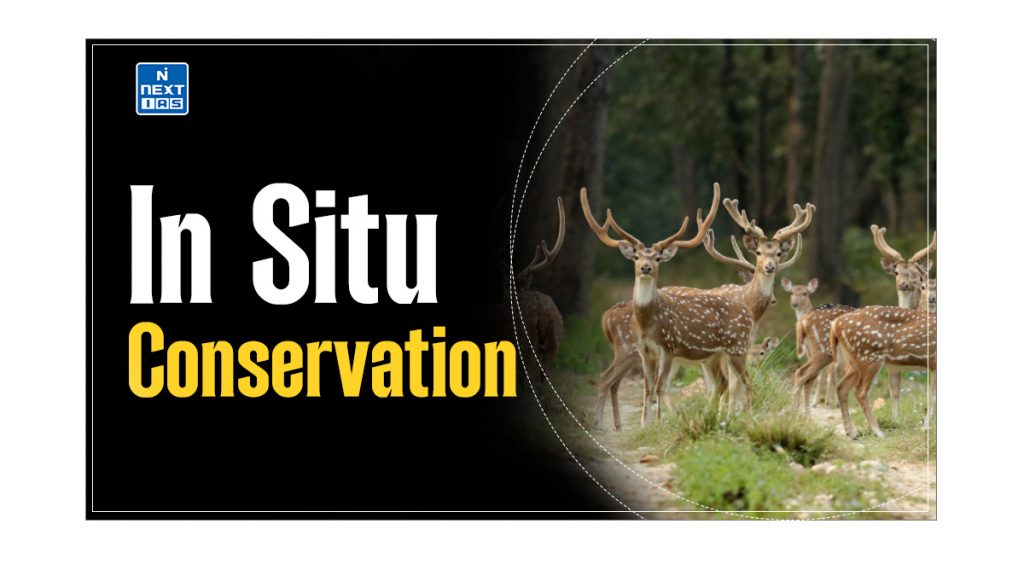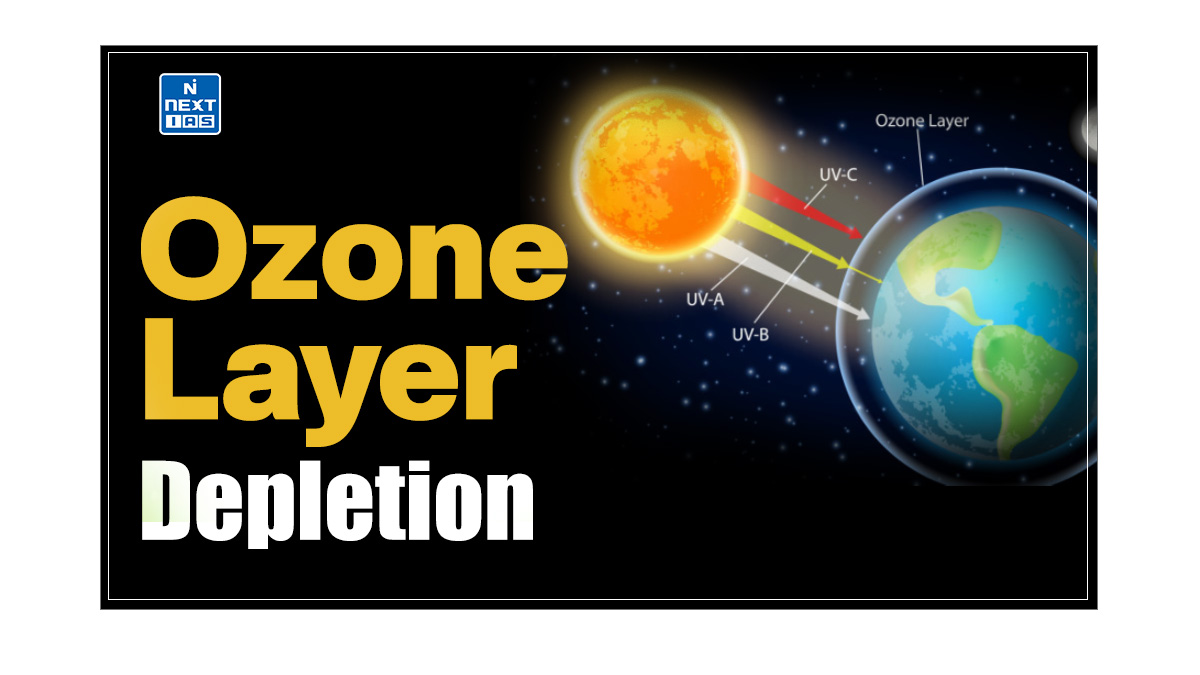
In Situ Conservation is a vital strategy for protecting species and ecosystems that are at risk. By maintaining ecosystem integrity, supporting genetic diversity, and promoting sustainable resource use, this method of conservation contributes significantly to ecological and human well-being. This article aims to study in detail in situ conservation, its meaning, and various methods, including etc.
What is In Situ Conservation?
- In Situ Conservation refers to the protection and maintenance of ecosystems and natural habitats to ensure that species survive and thrive in their native environments.
- This approach focuses on preserving the dynamic and complex interactions within ecosystems, which are crucial for the sustainability of species and habitats.
- It can either be targeted at populations of selected species (species-centered) or whole (ecosystem-based).
Methods of In Situ Conservation of Biodiversity
- Prominent methods of this type of conservation include the creation of Protected Areas.
- Some of the Protected Areas designed for this method of conservation include:
- National Parks,
- Wildlife Sanctuaries,
- Biosphere Reserves,
- Conservation Reserves,
- Community Reserves,
- Sacred Groves, and
- Coastal and Marine Protected Areas.
Read our detailed article on the Protected Area Network (PAN) in India.
National Park
- A National Park is a designated area set aside for the conservation of ecosystems, the protection of biodiversity, and the provision of opportunities for recreation and environmental education.
- They are established under the provisions of the Wildlife (Protection) Act of 1972.
- The main objective of a national park is to protect the natural environment of the area and conserve biodiversity.
Wildlife Sanctuary
- A wildlife sanctuary is a protected area designated for the conservation of wildlife species and their habitats.
- They are also established by the State Government under the provisions of the Wildlife (Protection) Act of 1972.
- Unlike national parks, wildlife sanctuaries may permit within their boundaries certain human activities which don’t interfere significantly with the well-being of the wildlife.
Biosphere Reserve
- A Biosphere Reserve (BR) is an area of terrestrial, marine and coastal ecosystems that promote the conservation of biodiversity with its sustainable use.
- Biosphere Reserves are integral components of the internationally recognized framework of UNESCO’s Man and Biosphere (MAB) programme initiated in 1971 and they are nominated by national Governments.
Read our detailed article on Biosphere Reserves (BRs).
Conservation Reserve
- Conservation Reserve refers to an area lying adjacent to national parks or wildlife sanctuaries, owned by the State Government adjacent, and is designated for protecting the landscape, seascape, and habitat of fauna and flora.
- These reserves are created under the Wildlife (Protection) Amendment Act of 2002.
Community Reserve
- A community reserve is a type of protected area that is established and managed by local communities in collaboration with the government.
- The designation and declaration of such an area is aimed at improving the socio-economic conditions of the people living therein along with conserving wildlife.
- These reserves were created under the Wildlife (Protection) Amendment Act of 2002.
Sacred Groves
- Sacred groves comprise of patches of forests or natural vegetation (from a few trees to forests of several acres) that are usually dedicated to local folk deities (e.g. Ayyanar and Amman) or tree spirits (Vanadevatais).
- These groves are protected by the local communities because of their religious beliefs and traditional rituals that run through several generations.
Coastal and Marine Protected Areas
- As defined by the IUCN, they refer to any area of intertidal or subtidal terrain, together with its overlaying water and associated flora, fauna, and historical and cultural features, which has been reserved by law or other effective means to protect part or all of the enclosed environment.
- They aim to protect and conserve the natural marine ecosystems in their pristine condition.
Advantages of In Situ Conservation
- Preservation of Ecosystems: Protects entire ecosystems, ensuring the survival of interdependent species.
- Ecosystem Integrity: Maintains the integrity of ecosystems by preserving natural processes, interactions, and dynamics essential for ecosystem health and resilience.
- Maintenance of Genetic Diversity: Protecting species in their natural habitats allows and safeguards the natural variation within populations. This is crucial for species’ adaptability to changing environmental conditions.
- Balanced Approach: It allows for the sustainable use of natural resources by local communities, promoting a balance between conservation and human needs.
- Cultural Preservation: It often aligns with the preservation of cultural heritage and traditional knowledge, particularly in areas where indigenous practices contribute to biodiversity conservation.
- Cost-Effective: Often more cost-effective than ex-situ conservation in the long term.
- Public Awareness: Creates opportunities for environmental education and public awareness.
- Scientific Research: Provides valuable data for ecological studies.
Challenges & Disadvantages of In Situ Conservation
- Human-Wildlife Conflict: Proximity of human settlements to protected areas can lead to conflicts, such as crop damage by wildlife or poaching, complicating conservation efforts.
- Habitat Loss and Fragmentation: Human activities such as urbanisation and infrastructure development lead to habitat fragmentation, isolating species and reducing genetic flow.
- Resource Constraints: Insufficient funding, inadequate infrastructure, and lack of trained personnel often hinder effective conservation efforts.
- Illegal Activities: Poaching, deforestation, and encroachment remain significant challenges.
- Climate Change: Changing climate patterns can alter habitats, forcing species to migrate or adapt. In such a scenario, Protected Areas may no longer represent the ideal conditions for some species.
- Invasive Species: Non-native species can disrupt ecosystems by outcompeting, preying on, or spreading diseases to native species.
Conclusion
In Situ Conservation is an essential component of biodiversity conservation efforts. Despite the challenges, effective implementation of this method of conservation through protected areas, community involvement, and integrated management approaches can safeguard the rich biodiversity of our planet. A balanced approach that integrates In-Situ and Ex-Situ conservation strategies is crucial for ensuring the long-term survival of species and the health of ecosystems.
Frequently Asked Questions (FAQs)
What is the key concept of in situ conservation?
The key concept of this type of conservation is the preservation and protection of species in their natural habitats.
Is National Park in situ conservation?
Yes, a National Park is an example of an in situ type of conservation, as they aim to protect species in their natural habitats.
Is zoo in situ conservation?
No, a zoo is not an example of in situ conservation. Rather, it is a form of ex situ conservation, as they aim to protect species outside their natural habitats.
What is the full form of in situ?
“in situ” is a Latin phrase that means “in its original place” or “on site.” It refers to something that is located in its natural or original position.






